As a coffee roaster, I’ll admit I used to be lazy about brewing. Roasting was my jam, but brewing? Meh. That changed when I started diving into the art of brewing to bring out those vibrant, fruit-forward flavors in my coffee. I reached out to my coffee nerd friend, Degenerates Drinking Coffee (DDC), who lives and breathes coffee (it’s definitely his flavor of obsession). He gave me a rundown on brewing basics, focusing on the V60, that transformed my cups. Here’s an updated guide for 2025 to help you brew fruit-forward coffee like a pro, with fresh tips and tools to keep your brews on point.
Assumptions for Great V60 Brewing
Before we dive in, let’s assume you’ve got the basics down:
- Your grind size is dialed in—no over- or under-extraction.
- You know your coffee’s tasting notes (e.g., fruity, floral, chocolatey).
- You’re familiar with your brewing device and its strengths.
The V60 is my go-to for now because it’s versatile and highlights delicate flavors. Other brewers like the Kalita Wave, AeroPress, Chemex, or Fellow Stagg X are great too, but each has its own rabbit hole. We’ll stick with the V60 for this guide and explore others in future posts [link to related blog post on your site].
Coffee Grinding: The Foundation
Grind size is critical for V60 brewing, but describing it can be tricky since grinders vary. For context, I use a Mahlkönig EK43 professionally—it’s the gold standard for pour-over and espresso. At home, my Rancilio Rocky is a solid entry-level grinder for pour-overs. For a V60, I set the EK43 to 7.8 and the Rocky to 29. Your grinder’s settings will differ, so let’s simplify.
Updated Grinding Tool for 2025
A great starting point is the Baratza Grind Size Chart (updated for 2025) or the Fellow Grind Guide [link to tool, e.g., https://fellowproducts.com/pages/grind-guide]. These tools cover popular grinders like Baratza, Comandante, and Wilfa, so you’ll likely find yours listed. Input your grinder and brewing method (V60) to get a baseline setting.
Grinding Tips:
- Light roasts (denser) need a slightly finer grind than dark roasts, which break apart easily and produce more fines (tiny particles that can muddy your brew).
- Example: Grinding a dark roast at the same setting as a light roast results in a finer grind, risking over-extraction and bitterness.
- Test and tweak: Start with the tool’s suggested setting, then adjust based on taste (more on this below).
V60 Brewing Guide for Fruit-Forward Coffee
Let’s get to the good stuff—the recipe! This is for a light roast with fruit-forward notes (think berry, citrus, or stone fruit). I’ve refined DDC’s method with 2025 trends and my own experiments to maximize flavor clarity.
Recipe: V60 for 1 Cup
- Ratio: 1:15 (20g coffee to 300g water).
- Water Temp: 200°F (93°C) for light roasts.
- Grind Size: Medium-fine (like table salt; adjust per your grinder).
- Bloom: 60g water (3x coffee weight) for 45 seconds.
- Total Brew Time: ~2.5–3 minutes.
Steps:
- Prep: Place a V60 filter in the dripper, rinse with hot water to remove paper taste, and preheat your cup or carafe. Discard rinse water.
- Bloom: Add 20g of ground coffee. Pour 60g of 200°F water in a slow, circular motion. Let it bloom for 45 seconds to release gases and prep for extraction.
-
Pour: Pour 60–100g of water per pulse in low, circular motions (like stirring a small whirlpool). Aim for 3–4 pulses to reach 300g total. This agitation enhances extraction and brings out fruity notes.
- Pro Tip: Experiment with pour speed and patterns (circular, spiral, or center pour). A steady, single pour often yields a flat cup, missing delicate flavors.
- Finish: Stop pouring when you hit 300g. Let the coffee drip through completely. If it takes longer than 3.5 minutes, coarsen your grind next time.
Why This Works: The 1:15 ratio balances strength and flavor clarity, while pulsed pouring adds controlled agitation to highlight fruit-forward notes. I’ve brewed Ethiopian Yirgacheffe with this method, and the blueberry and jasmine notes pop!
Fine-Tuning Variables
Once you nail the pour, tweak these for even better results:
- Grind Size: Too fine? Bitter cup. Too coarse? Weak and sour. Adjust in small increments.
- Water Temp: 198–205°F is ideal for light roasts. Above 205°F risks over-extraction (punchy, bitter flavors); below 195°F leads to under-extraction (sour, flat).
- Ratio: Try 1:14 for a stronger cup or 1:16 for a lighter one.
- Agitation: Play with pulse frequency or pour height. More agitation can boost brightness but risks bitterness if overdone.
Water Temperature: Updated Insights
In 2025, coffee geeks agree: 198–205°F (92–96°C) is the sweet spot for most coffees. Older advice (pre-2020) suggested lower temps for dark roasts (193–200°F) and higher for light roasts (200–208°F), but precision kettles like the Fellow Stagg EKG [link to review on your site] make hitting 200°F easy and consistent.
- Too hot (205°F+): Over-extracts, muting fruity/floral notes and amplifying bitterness or chocolatey flavors.
- Too cool (<195°F): Under-extracts, leaving a sour, underdeveloped cup.
- Pro Tip: If you’re stuck with cooler water, increase agitation (e.g., more pulses or a stir) to compensate, but this is a deep dive for another post [link to agitation blog post].
Tools to Elevate Your Brew
- Grinder: Upgrade to a Baratza Virtuoso+ or Comandante C40 for precision if your budget allows. The Rocky’s still solid for beginners.
- Kettle: A gooseneck kettle (e.g., Hario Buono or Fellow Stagg EKG) gives you pour control.
- Scale: A Timemore Black Mirror or Acaia Pearl ensures accurate coffee and water measurements.
- Water Quality: Use filtered water (e.g., Third Wave Water packets) to avoid off-flavors.
